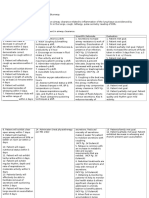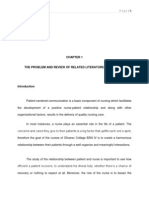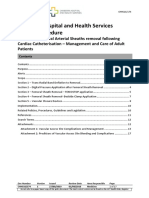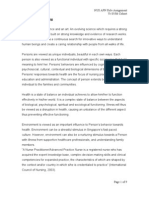100% found this document useful (1 vote)
518 views9 pagesCare Coordination Essentials
This document discusses the fundamental principles of care coordination. It defines care coordination as synchronizing patient healthcare delivery across different specialists and providers. The goal of care coordination is to improve health outcomes by ensuring care is not delivered in silos. Key elements include easy access to services, integrated communication, and patient-centered care. Care coordination occurs at various levels such as primary, acute, and long-term care. Registered nurses play an important role in care coordination by assessing patients, developing care plans, and ensuring smooth transitions. Barriers to effective care coordination include a lack of uniformity and challenges with interoperability between health records systems.
Uploaded by
Albert KeinoCopyright
© © All Rights Reserved
We take content rights seriously. If you suspect this is your content, claim it here.
Available Formats
Download as DOCX, PDF, TXT or read online on Scribd
100% found this document useful (1 vote)
518 views9 pagesCare Coordination Essentials
This document discusses the fundamental principles of care coordination. It defines care coordination as synchronizing patient healthcare delivery across different specialists and providers. The goal of care coordination is to improve health outcomes by ensuring care is not delivered in silos. Key elements include easy access to services, integrated communication, and patient-centered care. Care coordination occurs at various levels such as primary, acute, and long-term care. Registered nurses play an important role in care coordination by assessing patients, developing care plans, and ensuring smooth transitions. Barriers to effective care coordination include a lack of uniformity and challenges with interoperability between health records systems.
Uploaded by
Albert KeinoCopyright
© © All Rights Reserved
We take content rights seriously. If you suspect this is your content, claim it here.
Available Formats
Download as DOCX, PDF, TXT or read online on Scribd
/ 9





























































































